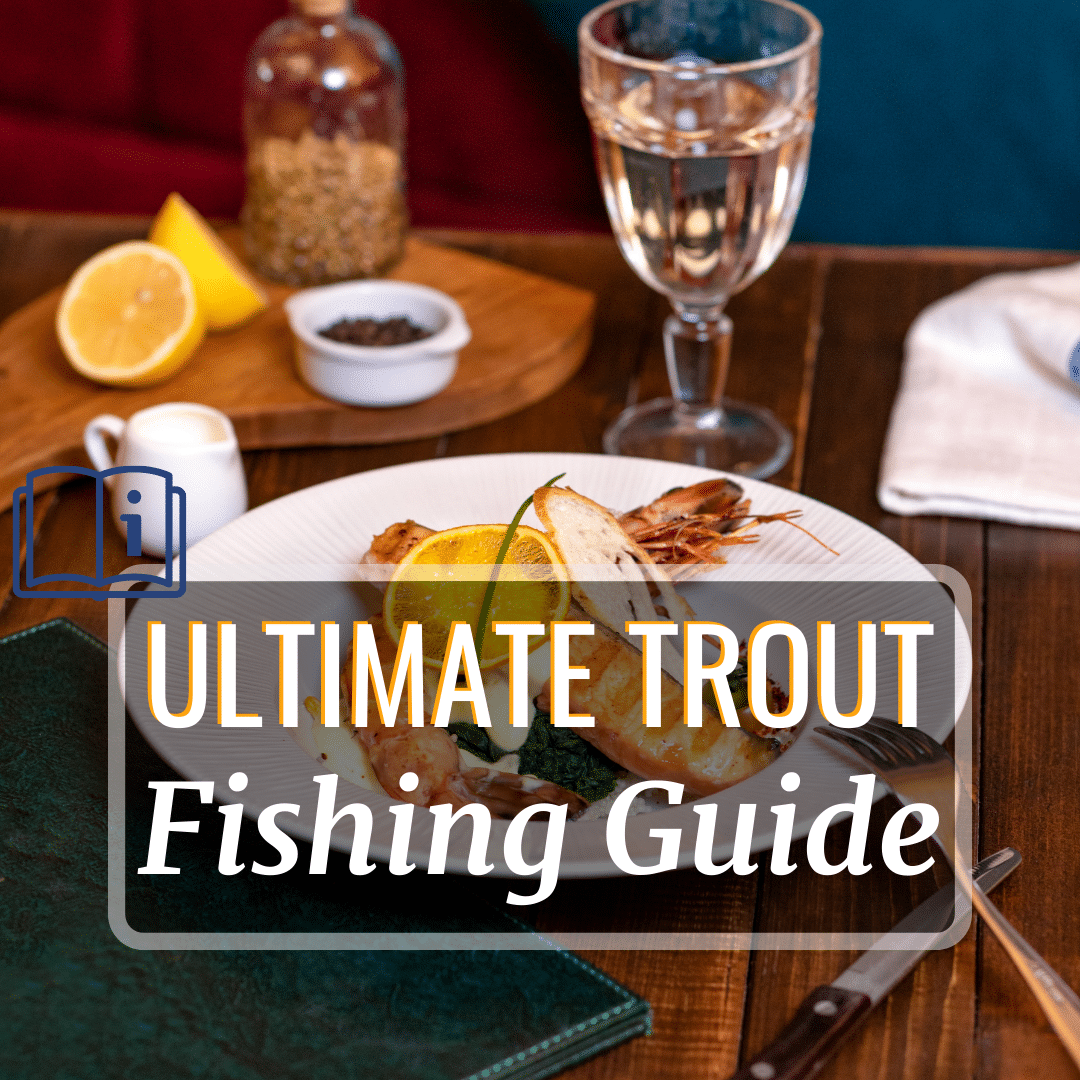Trouts can be really fun to catch. If you’re looking to get started on trout fishing, here is the ultimate trout fishing guide.
While I do go trout fishing on occasion, even with 21 years of fishing experience, I can’t say I’m a master at it. Don’t worry though, I asked around my other fishing buddies who regularly fish trout. Together, we came up with this comprehensive trout fishing guide to catch trout. To top it off, I spent a whole day fact-checking all the information, so you can be sure it’s reliable.
This guide will cover:
Which Fishing Rod and Reel Should I Use?
Is There a Specific Type Of Line to Use?
Which Baits and Lures Will Do The Trick?
Do I Need Sinkers and Bobbers?
As with any fishing trip, the very first step is to decide where to go.
Where Are Trout Found?
If you’re fishing in a place with no trout, you probably won’t catch any trout.
Luckily, there’s a wide variety of trout, such as rainbow trout and brown trout. You can find at least one species in most spots (Streams, rivers, creeks, ponds, and lakes) and you’re more likely to spot common species like brown trout. Trout also tend to be more abundant in cool (10-16°C) clear streams and lakes.
Another way to find a good location is to check out fishing maps. Your local fishing store can also be a great source of information.
Trout tend to stay around cover. Once you’ve found your location, simply fish around cover, like rocks.
Now let’s move on to the fishing gear you’ll need to catch trout.
Which Fishing Rod and Reel Should I Use?
For the fishing rod, it’s best to pick a medium-weight one that’s about six or seven feet in length with a 2-6 pound weight rating. This ensures that the rod will be flimsy enough to be fun when fishing. Then, pair it with a spinning reel.
Is There a Specific Type Of Line to Use?
For the line, don’t go above 10lb, because you need a nice, light presentation that fish can’t see. Usually, the 4lb test line is what trout anglers use.
For regular-sized trout between 10 and 20 inches, it’s best to use an ultralight 2-6lb test line. However, for larger trout species like steelheads and lake trout, you’ll need a heavier test (8-10lb).
Which Baits and Lures Will Do The Trick?
Trouts are like pigs. They eat pretty much everything edible. This includes nightcrawlers, canned corn, power eggs, shrimp, crawfish, fish eggs, etc, and the list goes on.
A fun way to find out what trouts eat is by testing out different baits.

In general, though, most anglers gravitate towards using minnows. Artificial baits like PowerBait are also becoming more popular when fly fishing for trout.
Since baits tend to work better than lures for catching fish, beginners will want to stick with baits.
Another thing to note is that trout often come to the surface to feed. Powerbait is a pretty good choice as it will float instead of staying on the floor wherever you’re fly fishing. If you’re using bait that won’t float, you’ll need a corky.
Do I Need Sinkers and Bobbers?
In short, yes. There isn’t much to be said about sinkers, because sinkers work the same whichever fish you’re targeting.
For your bobber, it’s crucial that it isn’t too floaty. If it’s too buoyant, when trout bite and feel the resistance, they’ll let it go. I would recommend that you stick with a 1/8-1/2 ounce bobber.
And that’s it for the fishing gear. Next up is the fishing technique.
The Fishing Technique
First off, set up a sliding float.
Afterward, reel up to about 1-1.5 feet out the end of your rod tip.
Point your rod tip behind you, and cast it overhead as far as you can.
Here’s the most important part. Hold your rod at 45 degrees, so that you can feel the tension when the fish bites.
Then, reel in the line until you see just a bit of a bend in your rod tip so that there’s no slack in your line. This way, when the fish bites, you can see it register on your rod.
When the bobber starts bobbing up and down, don’t set the hook until it’s completely submerged. Then, firmly pull the tip of your rod towards you so that your rod becomes 90 degrees, to set the hook.
Finally, reel the fish in.
Note that fly fishing is one of the most popular ways to fish for trout. However, fly fishing isn’t as versatile as other fishing styles and may not be applicable to other fishes. This is why I didn’t include a guide on fly fishing.
Recapping
To sum it all up, to find trout, fish in cool (10-16°C) clear streams and lakes, check out fishing maps, or ask your local fishing store. Then, fish around cover, like rocks.
Use a medium-weight fishing rod six or seven feet in length with a 2-6 pound weight rating. Pair it with an ultralight 2-6lb test line for regular-sized trout (10-20 inches) like brown trout. For larger trout like steelheads, use a heavier test (8-10lb).
Finally, you can use pretty much any bait for trout, although Powerbait is a great starting point. Use ⅛-½ ounce bobbers.
Need some further tips on fishing? Check out our top 10 fishing tips to take your fishing game to the next level.

